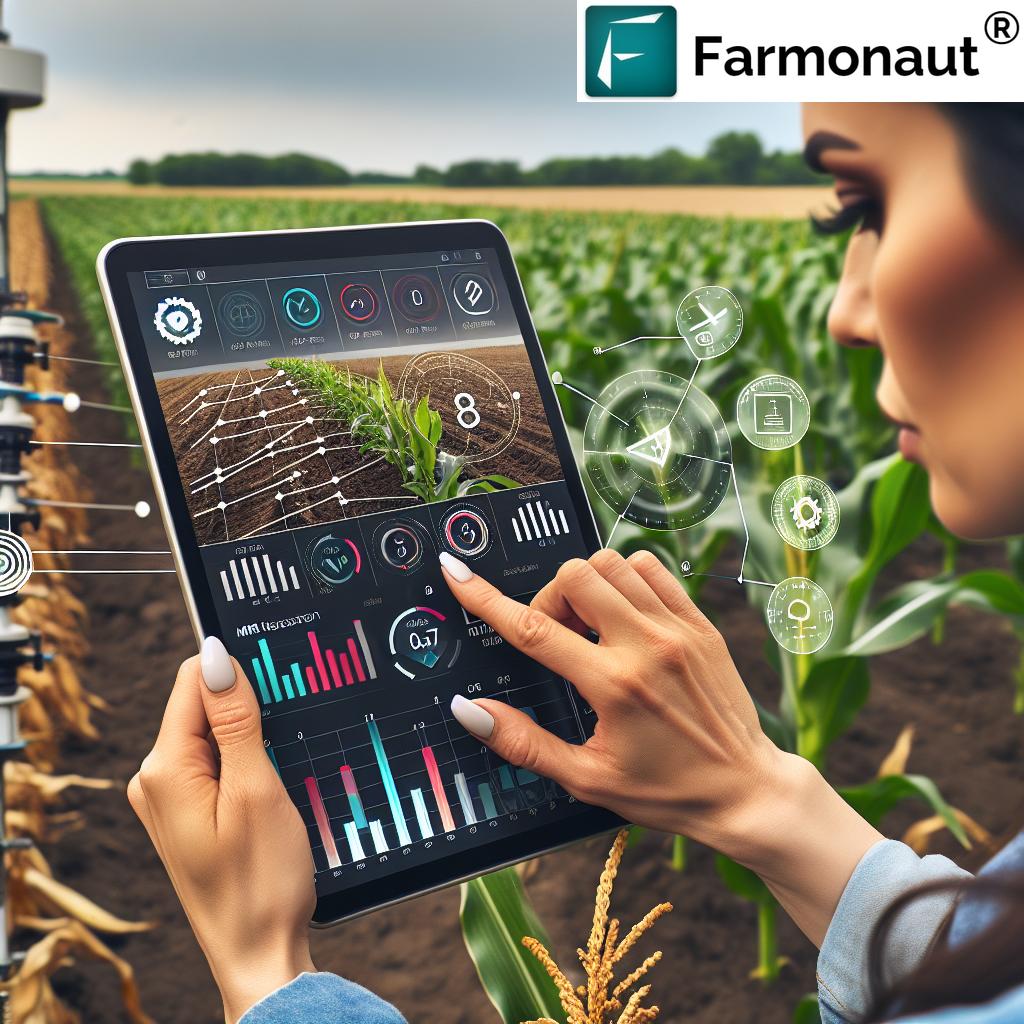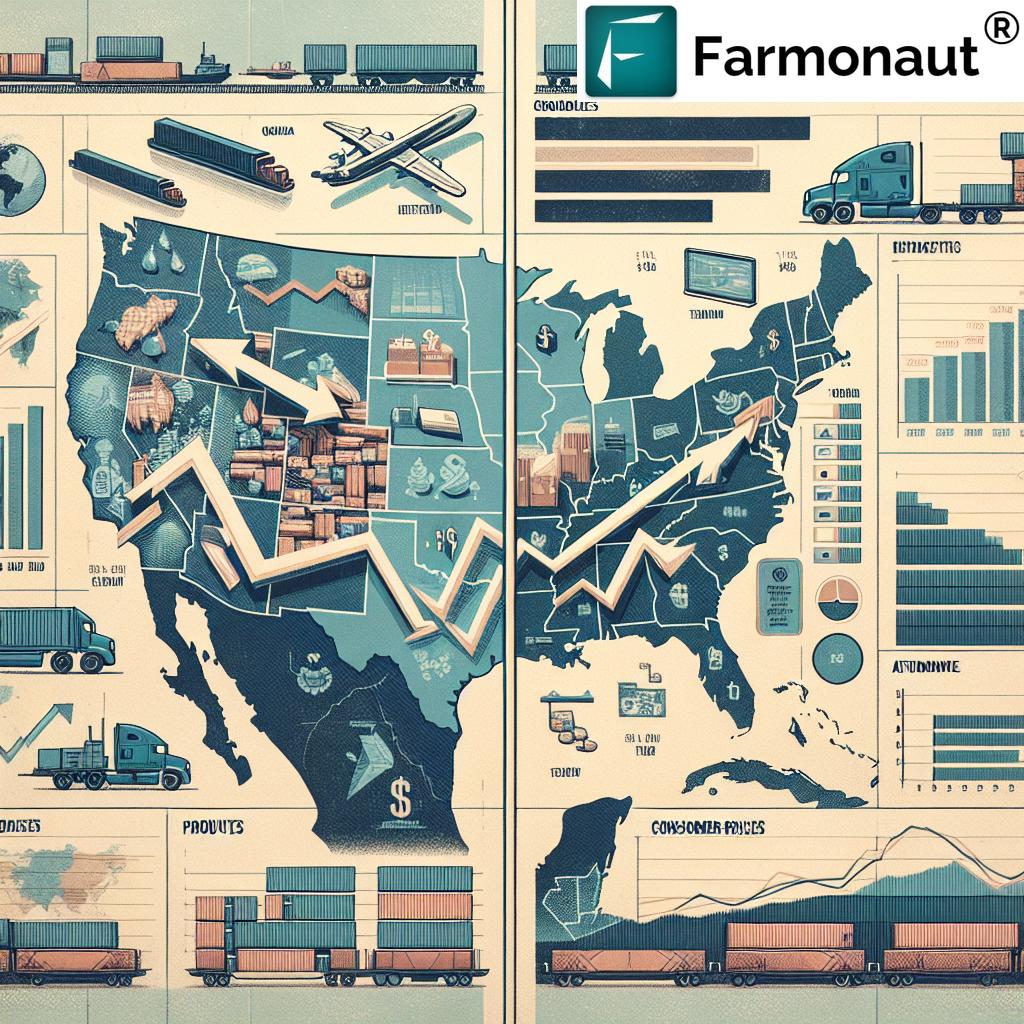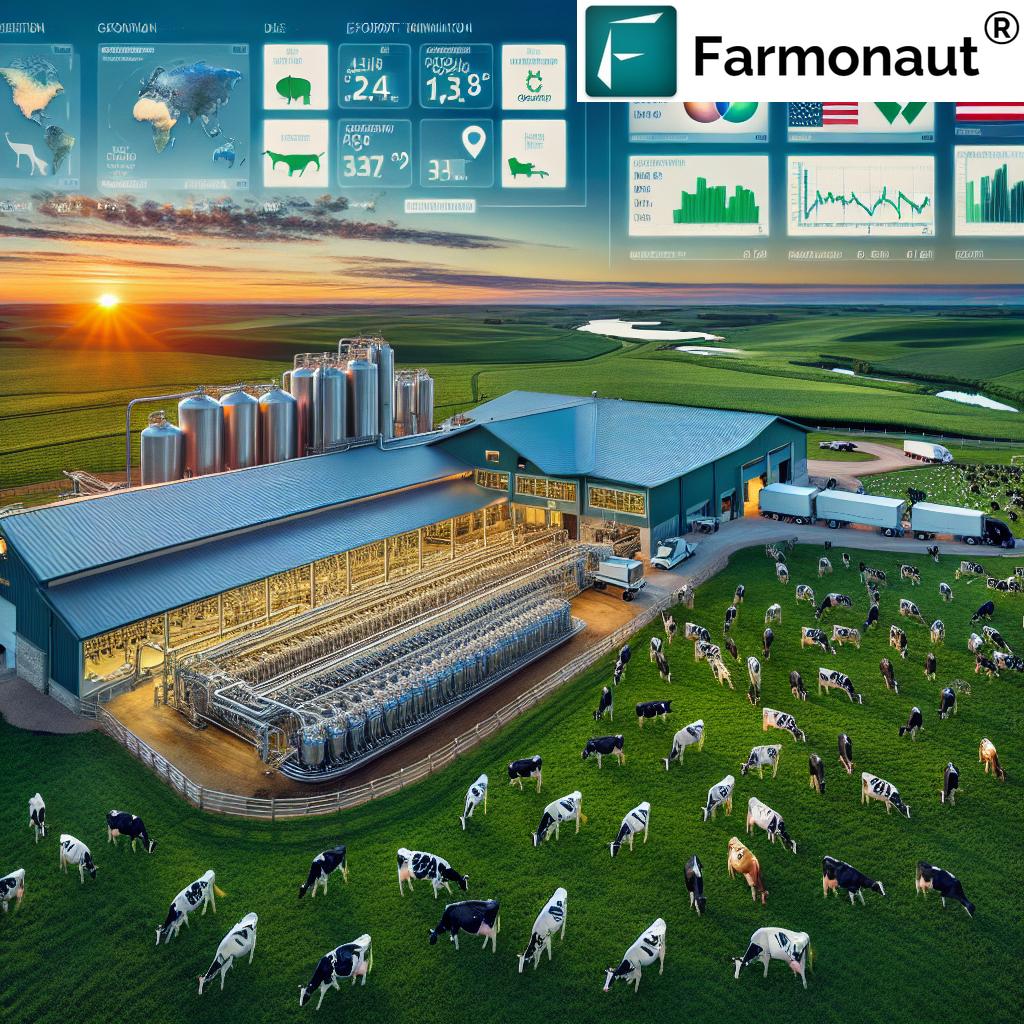Optimizing Corn Yields in Iowa: Precision Nitrogen Management Strategies for Maximum Economic Return
“The Maximum Return to Nitrogen (MRTN) approach can help farmers optimize nitrogen rates for up to 95% of maximum corn yield.”
In the heart of the Corn Belt, Iowa stands as a beacon of agricultural innovation, where the pursuit of optimum nitrogen rates for corn production has become both an art and a science. As we delve into the intricate world of precision nitrogen management, we find ourselves at the forefront of a revolution in farming practices that promises not only to maximize yields but also to ensure economic viability and environmental stewardship.
Today, we’re exploring cutting-edge strategies that are transforming the way we approach corn production in Iowa and beyond. From traditional methods to data-driven technologies, we’ll uncover the secrets to achieving the elusive economically optimum nitrogen rate (EONR) that can make all the difference in a farmer’s bottom line.

The Evolution of Nitrogen Management in Corn Production
The quest for optimizing nitrogen application in corn fields has been a long-standing challenge for farmers and agronomists alike. As we’ve progressed from the era of blanket applications to more nuanced approaches, the importance of precision in nitrogen management has become increasingly apparent. Let’s take a journey through the evolution of these practices and understand why they’re critical for modern agriculture.
Traditional Yield-Goal Method: A Foundation for Progress
For decades, the yield-goal method was the gold standard for determining nitrogen rates. This approach assumed a linear relationship between nitrogen application and corn yield, recommending a set amount of nitrogen for each bushel of expected yield. While simple and straightforward, this method often led to excessive applications, resulting in nutrient losses and environmental concerns.
The Shift to Economic Optimization
As our understanding of crop physiology and soil science advanced, so did our approach to nitrogen management. The concept of the economically optimum nitrogen rate (EONR) emerged, focusing not just on maximum yield, but on the point where the last unit of nitrogen applied returns a yield increase that pays for itself. This shift marked a significant step towards balancing productivity with profitability.
Enter the Maximum Return to Nitrogen (MRTN) Approach
Building on the EONR concept, the Maximum Return to Nitrogen (MRTN) approach revolutionized nitrogen recommendations. This data-driven method uses extensive field research to determine the most profitable nitrogen rate across various conditions. By considering factors such as soil type, previous crop, and nitrogen prices, MRTN provides a more robust and flexible framework for nitrogen management decisions.
The Corn Nitrogen Rate Calculator: A Game-Changing Tool
One of the most significant advancements in precision nitrogen management has been the development of the Corn Nitrogen Rate Calculator. This online tool, a product of collaborative research across Midwestern universities, allows growers to input specific field conditions and economic factors to receive tailored nitrogen rate recommendations.
- Location-specific data: The calculator accounts for variations in soil types and weather patterns across different regions.
- Economic considerations: By factoring in current corn and nitrogen prices, it provides recommendations that maximize economic return.
- Flexibility: Farmers can adjust inputs to see how different scenarios affect recommended rates.
The Corn Nitrogen Rate Calculator exemplifies how digital tools are empowering farmers to make more informed decisions. By leveraging extensive research data and real-time economic information, it bridges the gap between scientific knowledge and practical application.
Discover how Farmonaut’s satellite-based crop monitoring can complement your nitrogen management strategy. Try our web app for real-time insights into your fields.

Soil Testing: The Foundation of Precision Nitrogen Management
While calculators and models provide valuable guidance, the importance of soil testing cannot be overstated. Soil tests offer a snapshot of the current nutrient status in your fields, providing crucial data for fine-tuning nitrogen applications. Two key tests have emerged as particularly useful for corn producers in Iowa:
Pre-Plant Nitrogen Test (PPNT)
The PPNT measures the amount of nitrate-nitrogen present in the soil before planting. This test is especially valuable in areas where residual nitrogen from the previous season may be significant. By accounting for this existing nitrogen, farmers can adjust their application rates accordingly, potentially reducing input costs without sacrificing yield potential.
Pre-Sidedress Nitrate Test (PSNT)
Conducted when corn plants are 6-12 inches tall, the PSNT provides a more dynamic assessment of soil nitrogen levels. This test allows for in-season adjustments to nitrogen applications, accounting for factors such as spring mineralization and early-season losses. The PSNT is particularly useful in systems where a significant portion of nitrogen is applied as a sidedress.
“Precision nitrogen management strategies can potentially reduce fertilizer costs by 10-20% while maintaining or improving corn yields.”

Advanced Technologies in Nitrogen Management
As we push the boundaries of precision agriculture, new technologies are emerging that promise even greater accuracy in nitrogen management. These cutting-edge tools are helping farmers move beyond static recommendations to dynamic, responsive strategies that adapt to the ever-changing conditions in their fields.
Remote Sensing and Satellite Imagery
Satellite-based crop monitoring services, like those offered by Farmonaut, are revolutionizing the way we assess crop health and nitrogen status. By analyzing multispectral imagery, these platforms can detect subtle variations in crop vigor across entire fields, allowing for targeted nitrogen applications where they’re needed most.
Explore Farmonaut’s satellite-based crop monitoring solutions. Download our mobile apps for on-the-go field insights:


In-Season Sensing Technologies
Handheld chlorophyll meters and vehicle-mounted crop canopy sensors are providing real-time data on crop nitrogen status. These tools allow for on-the-go adjustments to nitrogen applications, ensuring that plants receive the right amount of nutrients at critical growth stages.
Precision Application Equipment
Variable-rate technology (VRT) applicators have made it possible to apply nitrogen at different rates across a single field. When combined with high-resolution soil and crop data, VRT can significantly improve nitrogen use efficiency, reducing waste and improving economic returns.
Environmental Considerations in Nitrogen Management
While optimizing yields and economic returns is crucial, the environmental impact of nitrogen management cannot be overlooked. Excessive nitrogen application can lead to nutrient runoff, contaminating water sources and contributing to issues like algal blooms. As stewards of the land, Iowa farmers are increasingly adopting practices that balance productivity with environmental responsibility.
Cover Crops and Nitrogen Cycling
The use of cover crops, such as cereal rye or hairy vetch, is gaining popularity as a way to improve soil health and manage nitrogen more effectively. These crops can capture excess nitrogen, preventing it from leaching into groundwater, and release it back to the soil as they decompose, potentially reducing the need for synthetic fertilizers.
Split Applications and Slow-Release Formulations
Rather than applying all nitrogen at once, many farmers are adopting split application strategies. By spreading nitrogen applications throughout the growing season, plants can utilize nutrients more efficiently, reducing the risk of losses to the environment. Additionally, slow-release nitrogen formulations are providing a more controlled nutrient supply, aligning more closely with crop demands.
Nitrification Inhibitors
Chemical additives known as nitrification inhibitors can slow the conversion of ammonium to nitrate in the soil. This can be particularly beneficial in wet conditions, where nitrate is prone to leaching or denitrification. By keeping nitrogen in the ammonium form for longer, these products can improve nitrogen use efficiency and reduce environmental losses.
Farmonaut’s API offers developers access to our satellite and weather data for custom agricultural applications. Explore our API and developer documentation to integrate precision agriculture insights into your solutions.
Economic Analysis of Precision Nitrogen Management
The ultimate goal of precision nitrogen management is to maximize economic returns while minimizing environmental impact. Let’s break down the economic considerations that come into play when implementing these strategies:
Cost-Benefit Analysis
While precision management tools and technologies often require upfront investments, they can lead to significant savings in the long run. Reduced fertilizer costs, improved yields, and potential premium prices for environmentally sustainable products can offset initial expenses.
Risk Management
By fine-tuning nitrogen applications, farmers can better manage the risks associated with price fluctuations in both corn and fertilizer markets. Precision strategies allow for more flexible and responsive management, adapting to changing economic conditions throughout the growing season.
Long-Term Soil Health
While not always immediately quantifiable, the long-term benefits of improved soil health resulting from optimized nitrogen management can lead to sustained yield improvements and reduced input costs over time.
Adapting to Climate Variability
In an era of increasing climate uncertainty, the ability to adapt nitrogen management strategies to variable weather conditions is becoming crucial. Iowa’s farmers are at the forefront of developing resilient practices that can withstand the challenges posed by changing precipitation patterns and temperature fluctuations.
Weather-Based Nitrogen Models
Advanced nitrogen models that incorporate real-time weather data and forecasts are helping farmers make more informed decisions about the timing and rate of nitrogen applications. These models can account for factors such as soil temperature, rainfall, and potential leaching events, allowing for proactive management strategies.
Drought-Resistant Practices
In response to the threat of prolonged dry periods, farmers are exploring drought-resistant corn varieties and management practices that improve water use efficiency. These strategies often go hand-in-hand with optimized nitrogen management, as water and nitrogen uptake are closely linked.
Flexible Application Timing
The ability to apply nitrogen multiple times throughout the growing season provides greater flexibility in responding to weather events. By reserving a portion of nitrogen for in-season applications, farmers can adjust their strategies based on actual growing conditions, rather than relying solely on pre-season predictions.
| Strategy Name | Description | Estimated Yield Impact | Environmental Considerations |
|---|---|---|---|
| Traditional Yield-Goal Method | Fixed N rate based on expected yield | 0-5% | High (potential for over-application) |
| Maximum Return to Nitrogen (MRTN) Approach | Data-driven method considering economic factors | 5-10% | Medium (balances yield and environmental impact) |
| Pre-Plant N Test | Soil testing before planting to assess residual N | 3-8% | Low (prevents unnecessary application) |
| Pre-Sidedress Nitrate Test | In-season soil test for dynamic N management | 5-12% | Low (allows for precise in-season adjustments) |
| Real-time Crop Monitoring | Satellite and sensor-based continuous assessment | 8-15% | Low (optimizes N use efficiency) |
The Role of Education and Extension Services
As precision nitrogen management strategies continue to evolve, the importance of education and outreach cannot be overstated. Iowa State University Extension and Outreach, along with other agricultural organizations, play a crucial role in disseminating the latest research findings and best practices to farmers across the state.
Workshops and Field Days
Hands-on learning opportunities allow farmers to see precision management techniques in action and discuss their implementation with experts and peers. These events are vital for building a community of knowledge and fostering innovation in the field.
Online Resources and Decision Support Tools
The development of user-friendly online platforms and mobile applications is making it easier for farmers to access and apply complex agronomic information. From interactive nitrogen rate calculators to crop modeling tools, these resources are empowering farmers to make data-driven decisions.
Farmer-to-Farmer Networks
Peer learning networks are proving to be powerful vehicles for spreading innovative practices. By sharing experiences and results, farmers can learn from each other’s successes and challenges, accelerating the adoption of precision nitrogen management techniques.
Future Directions in Nitrogen Management
As we look to the future of corn production in Iowa, several emerging trends and technologies promise to further refine our approach to nitrogen management:
Artificial Intelligence and Machine Learning
Advanced algorithms are being developed to process vast amounts of field data, from historical yield information to real-time sensor readings. These AI-driven systems have the potential to provide increasingly accurate and personalized nitrogen recommendations.
Gene Editing for Nitrogen Use Efficiency
Ongoing research in plant genetics is exploring ways to develop corn varieties with improved nitrogen use efficiency. These advancements could lead to crops that require less nitrogen input while maintaining high yields.
Integration of Big Data
The ability to aggregate and analyze data from multiple sources – including weather stations, soil sensors, and satellite imagery – is opening new possibilities for holistic farm management. This integrated approach will allow for even more precise and responsive nitrogen management strategies.
Conclusion: A New Era of Precision and Sustainability
The journey towards optimizing corn yields through precision nitrogen management is an ongoing process of innovation and adaptation. As we’ve explored, the strategies available to Iowa’s farmers today are more sophisticated and effective than ever before. From the Maximum Return to Nitrogen approach to cutting-edge satellite monitoring technologies, the tools at our disposal are transforming the way we think about and implement nitrogen management.
By embracing these advanced techniques, farmers can not only maximize their economic returns but also play a crucial role in environmental stewardship. The future of corn production in Iowa is one where profitability and sustainability go hand in hand, driven by data-informed decisions and precision technologies.
As we continue to face challenges such as climate variability and market fluctuations, the principles of precision nitrogen management will become increasingly vital. By staying informed, adopting new technologies, and participating in knowledge-sharing networks, Iowa’s farmers are well-positioned to lead the way in sustainable and profitable corn production.
The path forward is clear: through continued research, education, and adoption of innovative practices, we can achieve a balance between maximum economic return and responsible resource management. This approach not only benefits individual farmers but also contributes to the long-term health and prosperity of Iowa’s agricultural landscape.
Experience the future of precision agriculture with Farmonaut. Our satellite-based crop monitoring services provide invaluable insights for optimizing nitrogen management and other critical aspects of corn production. Start your journey towards more efficient and sustainable farming today.
Frequently Asked Questions
- What is the economically optimum nitrogen rate (EONR)?
The EONR is the nitrogen application rate that maximizes economic return, considering both corn yield response and the cost of nitrogen fertilizer. - How does the Maximum Return to Nitrogen (MRTN) approach work?
MRTN uses extensive field research data to determine the most profitable nitrogen rate across various conditions, considering factors like soil type, previous crop, and nitrogen prices. - What are the benefits of using the Corn Nitrogen Rate Calculator?
The calculator provides tailored nitrogen rate recommendations based on location-specific data and current economic factors, helping farmers make more informed decisions. - How can satellite-based crop monitoring improve nitrogen management?
Satellite imagery can detect variations in crop vigor across fields, allowing for targeted nitrogen applications and more efficient use of resources. - What role do cover crops play in nitrogen management?
Cover crops can capture excess nitrogen, prevent leaching, and release nutrients back to the soil as they decompose, potentially reducing the need for synthetic fertilizers.
By implementing these advanced nitrogen management strategies and staying informed about the latest developments in precision agriculture, Iowa’s corn growers can look forward to a future of improved yields, increased profitability, and enhanced environmental stewardship.













